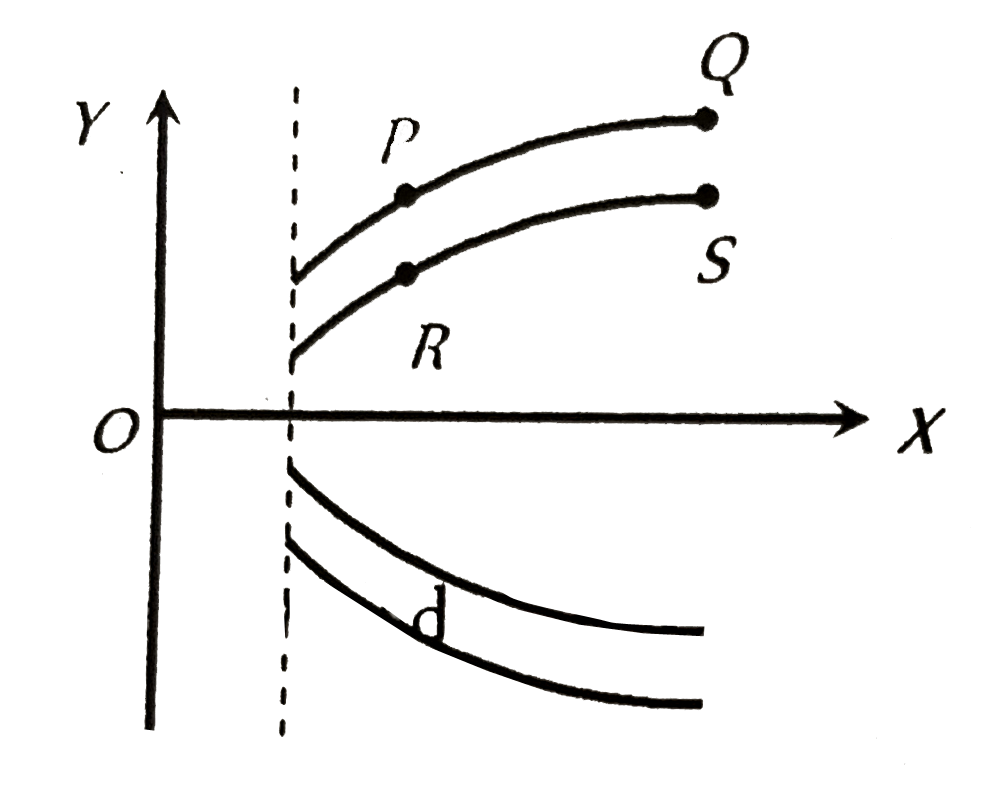In a parabola spectrograph, the velocities of four positive ions P,Q,R and S are v1,v2,v3andv4 respectively . Then

v1>v2>v3>v4
v1<v2<v3<v4
v1=v2=v3=v4
v1<<v2>v3<v4
The correct Answer is:A
Deflection ∝1v2
As xP<xQ<xR<xS
Hence v1>v2>v3>v4
Topper's Solved these Questions
- ELECTRON, PHOTON, PHOTOELECTRIC EFFECT & X -RAYBook:ERRORLESSChapter:ELECTRON, PHOTON, PHOTOELECTRIC EFFECT & X -RAYExercise:NCERT BASED QUESTIONS (Matter Waves)
Explore 24 Videos
- ELECTRON, PHOTON, PHOTOELECTRIC EFFECT & X -RAYBook:ERRORLESSChapter:ELECTRON, PHOTON, PHOTOELECTRIC EFFECT & X -RAYExercise:NCERT BASED QUESTIONS (Photon and Photoelectric Effect)
Explore 78 Videos
- ELECTROMAGNETIC INDUCTIONBook:ERRORLESSChapter:ELECTROMAGNETIC INDUCTIONExercise:ASSERTION & REASON
Explore 20 Videos
- ELECTRONICSBook:ERRORLESSChapter:ELECTRONICSExercise:Assertion & Reason
Explore 26 Videos
Similar Questions
Knowledge Check
In Thomson spectrograph experiment, four positive ions P,Q,R and S are situated on Y-X curve a shown in the figure
 AThe specific charge of R and S are sameBThe masses of P and S are sameCThe specific charges of Q and R are sameDThe velocities of R and S are same
AThe specific charge of R and S are sameBThe masses of P and S are sameCThe specific charges of Q and R are sameDThe velocities of R and S are sameTwo spherical planets P and Q have the same uniform density ρ, masses MpandMQ and surface areas A and 4A respectively. A spherical planet R also has uniform density ρ and its mass is (MP+MQ). The escape velocities from the plantes P,Q and R are VPVQandVR respectively. Then
AVQ>VR>VPBVR>VQ>VPCVPVP=3DVPVQ=12Two identical photo-cathodes receive light of frequencies v1 and v2. If the velocities of the photoelectrons (of mass m) coming out are v1 and v2 respectively, then
Av1−v2=[(2hm)(v1−v2))]1/2Bv21−v22=2hm(v1−v2)Cv1−v2=[(2hm)(v1−v2))]1/2Dv21−v22=2hm(v1−v2)
V1, V2, V3 and V4 are the volumes of four cubes of side lengths x cm , 2x cm , 3x cm and 4x cm respectively. Some statements regarding these volumes are given below V1+V2+2V3<V4 (2) V1+4V2+V3<V4 (3) 2(V1+V3)+V2=V4 Which of these statements are correct? (a) 1 and 2 (b) 2 and 3 (c) 1 and 3 (d) 1, 2 and 3
View SolutionThe velocity of a particle in S.H.M. at positions x1 and x2 are v1 and v2 respectively. Determine value of time period and amplitude.
View SolutionA planet is moving in an elliptical path around the sun as shown in figure. Speed of planet in positions P and Q are V1 and V2 respectively with SP=r1 and SQ=r2 , then v1/v2 is equal to

View SolutionThree planets of same density and with radii R1,R2 and R3 such that R1=2R2=3R3 have gravitation fields strength on planets are v1,v2,v3, respectively. Then :
View SolutionTwo particle A and B, move with constant velocities →v1and→v2. At the initial moment their position vectors are →r1 and →r2 respectively . The condition for particles A and B for their collision is
View Solution
 .
.